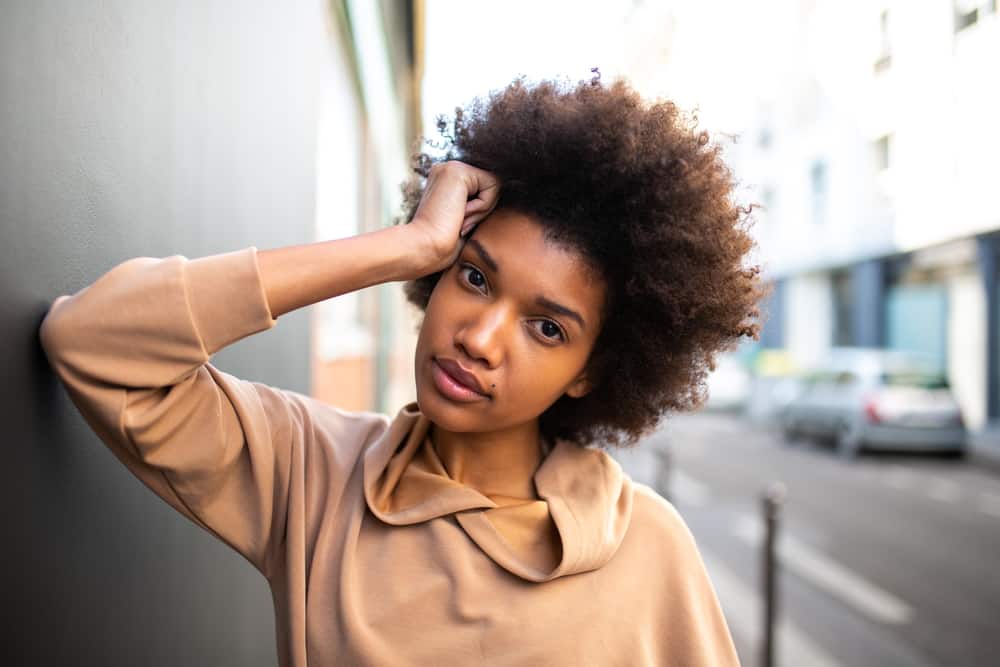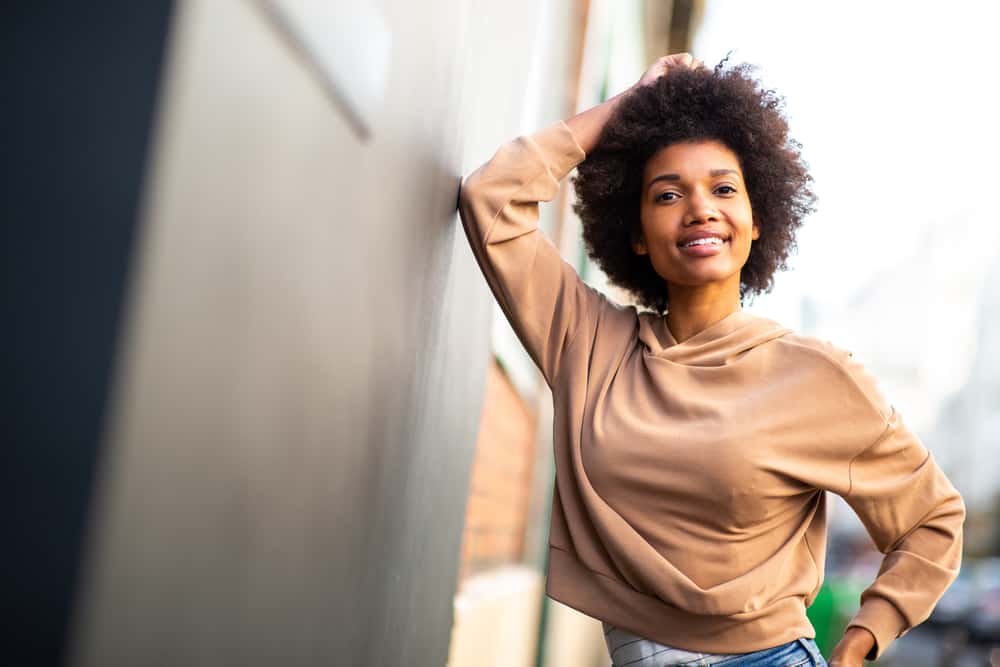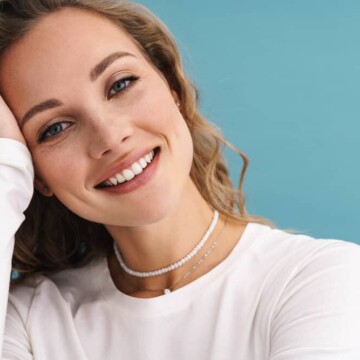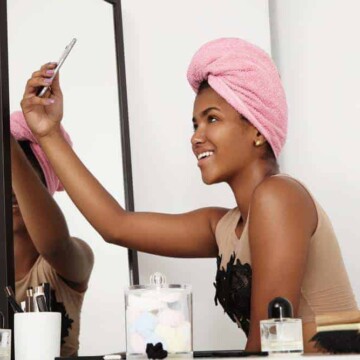
Are severe tangles and unruly matting wrecking your hair days? It’s easy to get discouraged when your hair doesn’t behave.
But matted hair doesn’t have to be an ongoing problem - you can fix it quicker than you think. The first step is to find out what causes your hair to mat up.
This article will tell you several reasons why your hair is matting underneath.
We’ll also throw in some anti-matting remedies and techniques to help you resolve this issue and avoid it in the future. Let’s get right into it!
Table of Contents
Why Is My Hair Matting Underneath?
Your hair is likely matting underneath due to six primary reasons: (1) you have natural curls that are prone to matting, (2) you have high porosity hair, (3) your detangling routine is lacking, (4) your hair is left to tangle overnight, (5) your hair is excessively dry, or (6) friction is causing the matting.
If you don't comb your hair to remove shed hair strands regularly, you might end up with a matted look. Hair matting can also be caused by poor detangling practices, long periods without a necessary trim, or not properly wrapping your hair up at night.
Key Takeaways
- Causes of Hair Matting. Hair matting, especially underneath, is often due to natural curls. Other common causes include high porosity hair, inadequate detangling routines, and dryness. Friction from objects like scarves or cotton pillowcases can also cause matting. Regular trims and protective hairstyles can mitigate these issues.
- Importance of Moisturization. Keeping your hair moisturized is crucial. Consider using hair oils like coconut oil or Moroccan argan oil. These oils help prevent tangles and mats. Well-moisturized hair slides past other strands easily, reducing the likelihood of severe mats.
- Effective Detangling Techniques. Use a wide-toothed comb or a soft bristle brush for detangling. These detangling work best on damp hair after applying a generous amount of conditioner. This reduces hair breakage and ensures tangle-free hair. Regular detangling is important to prevent little tangles from becoming severe mats.
- Nighttime Hair Care. Utilizing a satin pillowcase can significantly reduce friction. Satin pillowcases, combined with bonnets or silk scarves, can preserve your hair's health. This routine can prevent matting at the nape of your neck or the bottom of your hair.
- Choosing the Right Products. Use gentle shampoos, ideally sulfate-free options, and nourishing hair masks. If you use hot tools, be sure to use heat protectants. These products will help you maintain your hair's natural shine and health. They also minimize the risk of dryness and split ends contributing to matting. Regularly using the right products can significantly improve your hair texture and health. Just be sure you're avoiding harsh chemicals and excessive heat.

Your hair strands can also become tangled and wrapped around one another if the scales on the outermost layer of your hair shaft refuse to lie flat. When you have a naturally curly or coarse hair type, this is a common concern, but this problem can impact other hair types too.
Knowing why the mats are forming is the first step to getting rid of them; that’s where we’ll start. We’ll get into each of the six primary reasons in the section below.
Your Hair Is Curly
Curly hair is known to be prone to matting, given the fact that curls have random twists and turns. With this hair type, you can be sure to experience matting at some point.
When the matting is situated in the bottom layers of your hair and not so much in other areas, it could be that your hair is curlier in that area.
It could also be that the curls near the top of your head are longer and more stretched out due to their weight and gravity, making them less likely to mat up.

You Have High Porosity Hair
High porosity hair has cuticles that do not lie flat, causing neighboring strands to easily intertwine and create tangles and matting. Smoother strands, which have lower porosity, glide past each other more easily than high porosity strands do.
High porosity hair may be caused by genetic influences or can be brought on by aggressive styling, chemical hair treatments, and other hair abuse.

Your Detangling Routine Is Lacking
Regular detangling is essential not only for hair care and styling but it also helps to keep matted strands at bay. If your detangling routine is less of a routine and more of a rescue effort, this could be the cause behind your matted hair.
Also, often, we favor the hair at the crown of our heads when we detangle, neglecting the area underneath in the process. This also contributes to the matting.
When your hair isn’t detangled often enough, shed hairs collect and form mats. It’s as simple as that.

Your Hair Is Left to Tangle Overnight
Nighttime care is non-negotiable for all hair types, but especially for hair types 3 and 4. When you don’t implement a tangle-discouraging nighttime routine, you’re almost guaranteed to experience matting.
For example, you could use a silk pillowcase at night to mitigate the chances of creating a matting problem while you sleep.
Your Hair Is Dry
The drier your hair is, the more likely it is to tangle. Unfortunately, chronic hair dryness is a part of many curly girls’ natural hair journeys. Until you get a handle on hair dryness, matting may be an ongoing issue (tips on hair hydration to come).

Friction Is Causing the Matting
Friction is one of the most significant causes of hair matting. When your hair constantly rubs up against objects that aren’t smooth, they are bound to tangle on top of themselves and mat.
Matting underneath is common when sleeping without nighttime hair protection or when your hair rubs up against your turtlenecks or scarves.
4 Matting Prevention Methods
You may have an idea of which of the above culprits is behind your matting hair, but even if you don’t, this section will help. Here are 6 remedies you can try at home to prevent matting.

Stretch Out Your Curls
Since your curls’ twists and turns increase your risk of matting, stretching your curls can offer some relief. The looser your curls are, the fewer opportunities your hair will have to tangle and eventually mat.
We recommend using heatless methods to stretch out your hair, like braid-outs, twist-outs, bantu knots, or roller sets. All of these will give you stretched-out curls without damage.
Keep Your Hair Moisturized
When your hair is able to easily slide past neighboring strands, matting will become a thing of the past. So, it’s essential to keep your hair moisturized as often as possible.

Here are some tips you can use to keep your tresses’ moisture levels up:
- After washing, always use a conditioner or deep conditioner to lock in hydration.
- Use a leave-in conditioner whenever your hair starts to dry out. Spray leave-ins can be used every day, while cream leave-ins are best suited for weekly use.
- Cover your hair whenever you are in the sun. The sun can zap the moisture from your hair much quicker than you think.
- Pay special attention to the underlayers of your hair when you’re moisturizing. These areas are often forgotten.
Implement a Nighttime Hair Routine
Your nighttime hair care routine can make a huge difference in your matting issues, but only if you’re doing it right. Though your nighttime hair routine may look different from your girlfriend’s, there are a few goals that every routine should accomplish:

- It should keep your hair from rubbing up against your bedding, especially if it’s made of cotton or another absorbent material.
- It should aim to keep the moisture from escaping your tresses as you toss and turn.
- It should preserve your style and prevent friction throughout the night.
For loose curls/wash n’ gos: Lightly twist your curls into several sections to minimize movement and friction. Then, put on a silk or satin bonnet to keep your moisture levels up.
For silk presses or flat ironed curls: Use a paddle brush or Denman brush to brush your hair in a circular motion around your head. Ensure that it’s as flat as possible. Then, cover your wrapped hair up with a silk or satin scarf.

Detangle More Often
If you want to avoid matting, you’ve got to know that detangling effectively and routinely is critical. The right detangling frequency for you is individual, depending on how you wear your hair, how quickly your hair tangles, and your personal routine.
But, on average, weekly detangling sessions work well for those with textured hair.
It’s an excellent middle ground between detangling too little (resulting in matting) and detangling too often (resulting in mechanical hair damage).
Whenever you do detangle your hair, do so thoroughly. We’ll tell you how to do that in the next section.

How to Remove the Most Stubborn Tangles and Mats
Now that you know the top matting causes and prevention methods, it’s time to get into how to remove those mats without losing your mind or pulling out your hair.
Here are some tips to make it easy:
- Mist your hair with water to make it damp.
- Generously apply a detangling product that feels slippery to the touch. You can buy an actual detangler or use your favorite slippery conditioner.
- Use your fingers to remove any knots that you can. Be very gentle so you don’t break your hair.
- If needed, reapply the detangler or rewet your hair and remove more of the knots.
- Once all of the mats are gone, use a wide-tooth comb to eliminate any tangles that remain.

Note: Always detangle in small sections and never rush.
- How to Get a Rats Nest Out of Hair
- Why Does My Hair Clump Together
- Why Is Neck Hair Called the Kitchen
- Why Is My Curly Hair Frizzy When Wet
To keep your hair healthy and free from tangles, you must take good care of it and choose the right hair products. We recommend using a gentle shampoo. For example, employing a sulfate-free shampoo can enhance the health of your hair. We also regularly apply natural oils, like olive oil, within our curly hair regimens.
For
On wash days, apply a generous amount of conditioner. Also, cold water can help seal moisture, aiding in detangling processes. Then, use a microfiber towel to gently dry hair and minimize friction. As needed, a wide-tooth comb or detangling brush can effectively manage wet hair without causing breakage or further matting.
Regular trims and protective styles aid hair growth and prevent severe tangles and mats. By embracing these best tips and dedicating the necessary time to hair care, you can enjoy beautiful, healthy, and mat-free hair for a long time.
You now have everything you need to know about why your hair is matting, how to prevent it, and how to remove the mats. We hope you have found this article helpful and wish you many mat-free days!




